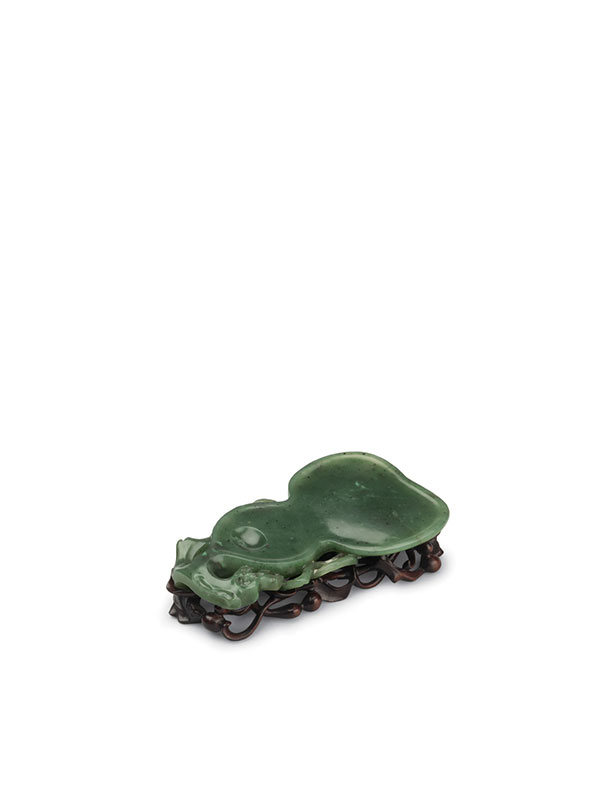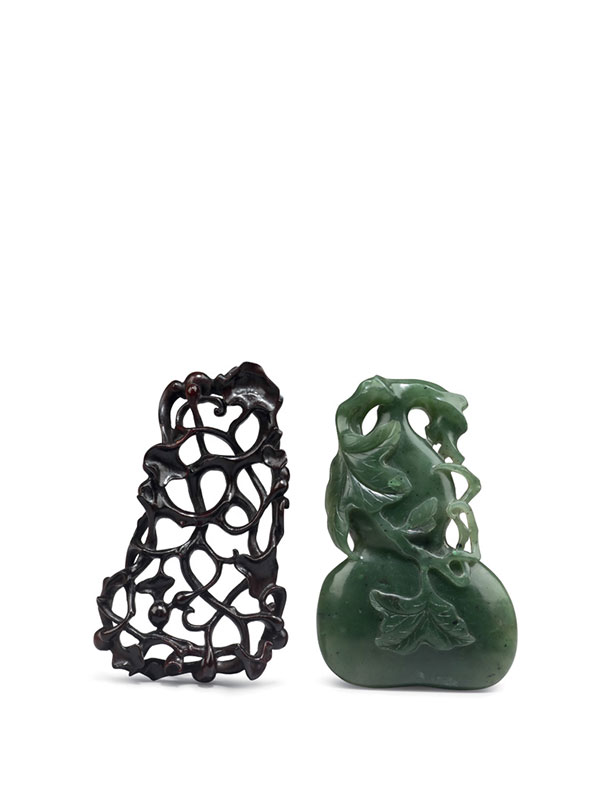Jade ink grinding stone of gourd shape
A nephrite ink grinding stone carved in the shape of a gourd, supported on naturalistically carved leaves in high relief that extend from twisted stalks emanating from the top. The surface of the inkstone is flat and has raised rims, with a small cavity located on the upper part of the gourd. The stone is of predominantly dark green tone with some russet markings. The ink grinding stone rests on a delicate wood stand, carved in openwork with interwoven tendrils.
Finely made scholar’s pieces such as this example were made purely for display, probably placed in one of the cabinets that were installed throughout the residences of wealthier members of the Chinese educated elite. Chinese ink is made in cakes or sticks and is ground with water to the desired consistency prior to being used. Jade is much too hard and smooth for grinding ink properly. The Chinese habit of collecting antiques, artworks and small curios and displaying them in cabinets may have been the motivation for the creation of this piece. The bottle gourd, by virtue of its numerous seeds and its massive network of string-like vines and tendrils, is a natural symbol of fertility and can be seen as a pun for ‘ten thousand generations (wandai)’.[1] A slightly larger dark green jadeite inkstone of leaf shape and comparable in colour is in the collection of the National Museum of History, Taiwan.[2] A further comparable nephrite bird-shaped inkstone, dated to the 19th century, is in the collection of the Asian Art Museum of San Francisco.[3] Another 19th century celadon jade inkstone contained in a silver box is in the collection of the Metropolitan Museum of Art.[4]
Provenance: private collection, the Netherlands
- Tse Bartholomew, T. Hidden Meanings in Chinese Art, Asian Art Museum, San Francisco, 2006, 3.3, p. 61
- The Jade-Carving Art in the Ch’ing Dynasty, National Museum of History, Taipei, 1991, p. 150
- Knight, M., Li, He, and Tse Bartholomew, T. Later Chinese Jades: Ming Dynasty to Early Twentieth Century from the Asian Art Museum of San Francisco, Asian Art Museum – Cong-Moon Lee Centre for Asian Art and Culture, San Francisco, 2007, no. 97, p. 119
- The Metropolitan Museum of Art online collection archive, accession number: 02.18.798a-d


